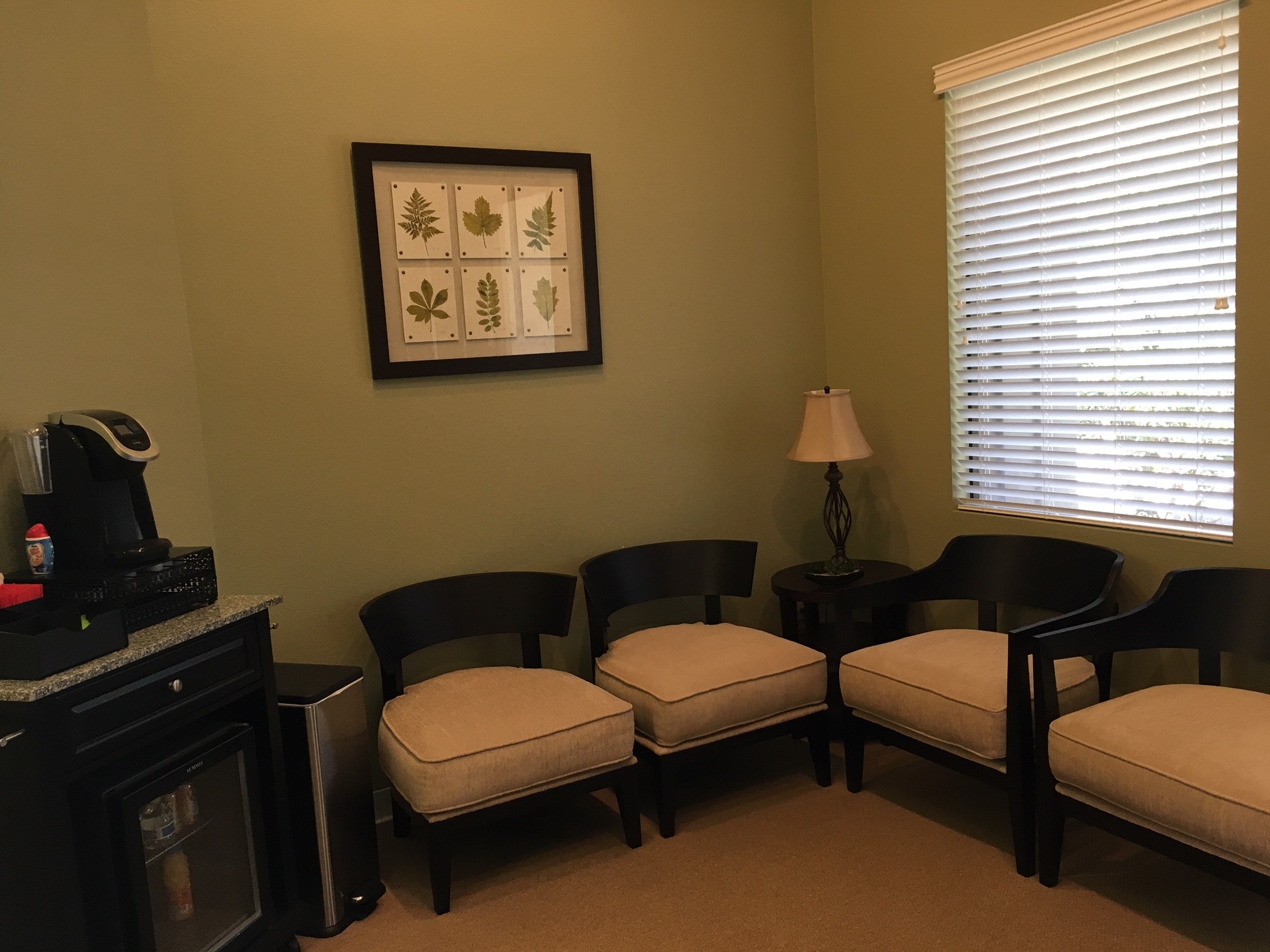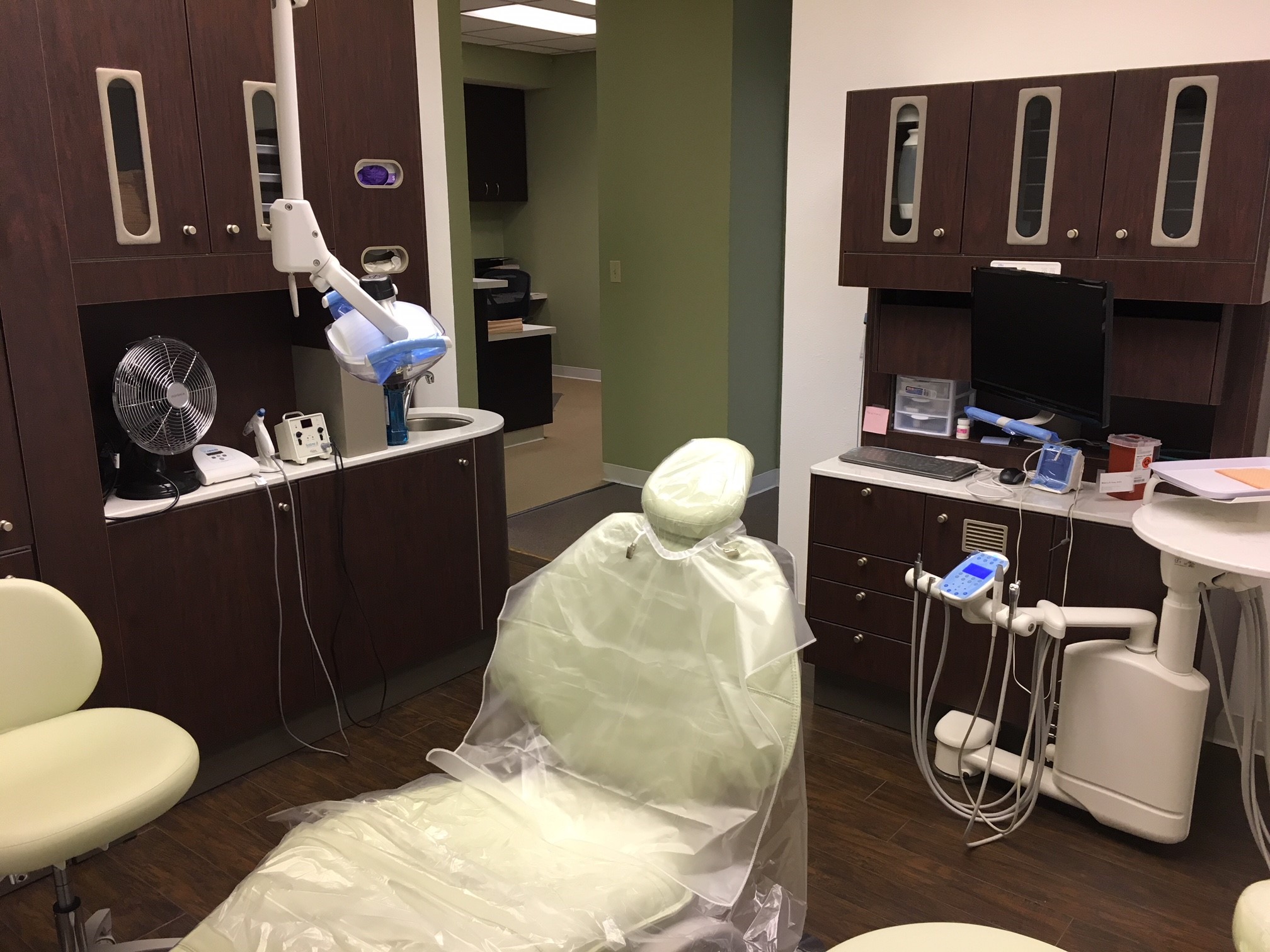Emergency Dentistry
Root Canal
Root canal is a treatment to repair and save a badly damaged or infected tooth instead of removing it. The procedure involves removing the damaged area of the tooth (the pulp) and cleaning and disinfecting it, then filling and sealing it. The common causes affecting the pulp are a cracked tooth, a deep cavity, repeated dental treatment to the tooth or trauma to it.
The term "root canal" comes from cleaning of the canals inside the tooth's root. Decades ago, root canal treatments were painful. With dental advances and local anesthetics, most people have little if any pain with a root canal today.
Root canal treatment consists of several steps that take place over several office visits, depending on the situation.
These steps are:
- The dentist examines and x-rays the tooth, then local anesthesia is administered to the affected tooth.
- The dentist makes an opening through the back of a front tooth or the crown of a molar or pre-molar to remove the diseased pulp, called a pulpectomy.
- Next, the pulp chamber and root canals are cleaned and shaped in preparation for a filling.
- The dentist fills the root canal with gutta percha material.
- If more than one visit is needed, a temporary filling is placed in the crown opening to protect the tooth between dental visits.The temporary filling is removed, and the pulp chamber and root canal are permanently filled with gutta percha into each of the canals and is sealed in place with cement. Sometimes a metal or plastic rod is placed in the canal for structural support. In the final step, a crown is usually placed over the tooth to restore its natural shape and appearance. If the tooth is broken, a post may be required to build it up prior to placing a crown.
Many people worry that a root canal will be painful, something that was true in the past. Today, with advanced anesthesia options and surgical techniques - a root canal is as comfortable as getting a filling. An infected tooth (pre-root canal), is usually what causes tooth pain, and a root canal is the solution to this problem. In fact, infected tooth pulp can cause a tooth abscess and can destroy the bone surrounding the tooth.
A treated and restored tooth can last a lifetime with proper care. Root canals have a high success rate and are significantly less expensive than the alternative, tooth extraction and replacement with a bridge or implant.
But tooth decay can still occur in treated teeth, so good oral hygiene and regular dental exams are necessary to prevent further problems. To determine the success or failure of root canal treatment, dentists typically compare new X-rays with those taken prior to treatment. This comparison will show whether bone continues to be lost or is being regenerated.
Sometimes root canals are not successful because an infection develops inside the tooth, or the original infection was not fully removed. In these cases, an apicoectomy, a procedure where the infection and the root tip are removed, and a filling placed, is done. Other times, a second root canal treatment is recommended.
Crack Tooth
Why am I experiencing dental pain?
Toothaches and dental pain can have many different causes. Here are some of the main reasons:
- Tooth decay
- Abscessed tooth
- Exposed nerve
- Tooth fracture
- Damaged filling
- Infected gums
Toothaches and dental pain can often indicate more serious dental problems such as gum disease, so please don’t delay in contacting our office for an examination.
What other symptoms accompany toothache and dental pain?
You may also experience one or all of the following symptoms along with toothache and dental pain:
- Swelling around the tooth
- Fever or headache
- Foul-tasting drainage from an infected tooth
- Earache, or pain when you open your mouth wide
Traumatic Injuries
Any trauma to the mouth that may cause bleeding and lacerations to the gums, and dislodge, or fracture teeth, and may require immediate medical attention.
As with any trauma to the mouth, you should consult your dentist immediately to determine if treatment is required. The dentist will examine the affected area and may take X-rays.
If you are in pain from a broken, cracked or chipped tooth, you may be able to take an over-the-counter pain reliever. If possible, keep any part of the tooth that has broken off and take it with you to the dentist.
Whether the result of an accident or biting on a piece of food that’s too hard, mouth injuries can cause teeth to become cracked, broken, or knocked out/dislodged.
If a tooth is completely knocked out of the mouth by an injury, take the tooth to our office as soon as possible. It may be possible for your tooth to be placed back into your mouth, a procedure called re-implantation.
If you’re playing any contact sports, wearing a mouthguard can help protect your teeth from injury and trauma. Mouthguards are available at most sporting goods stores; however, to ensure a mouthguard fits properly, contact our office for a consultation to have one custom made to protect the teeth.
To help protect your teeth from injury while eating, avoid biting hard candies and ice.
Left untreated, a dental emergency can lead to more serious complications. A cracked tooth, for instance, can leave a fracture in the tooth, a decayed tooth can cause a hole or opening in the tooth, and both are vulnerable to bacteria and decay. A jaw injury or possible fracture needs immediate attention at our office or in the emergency room.


